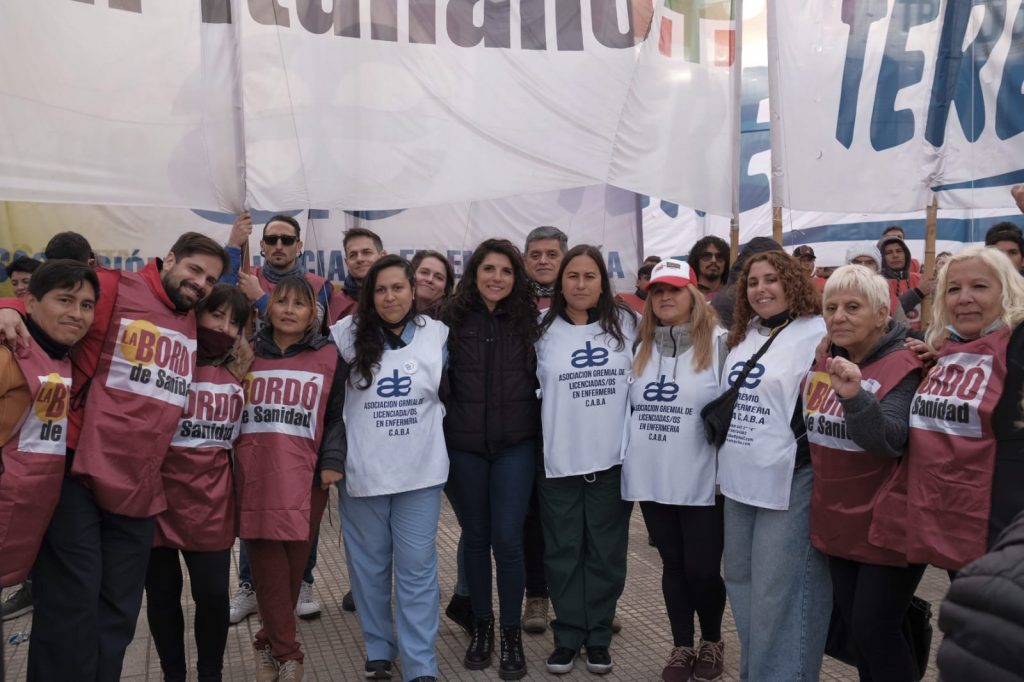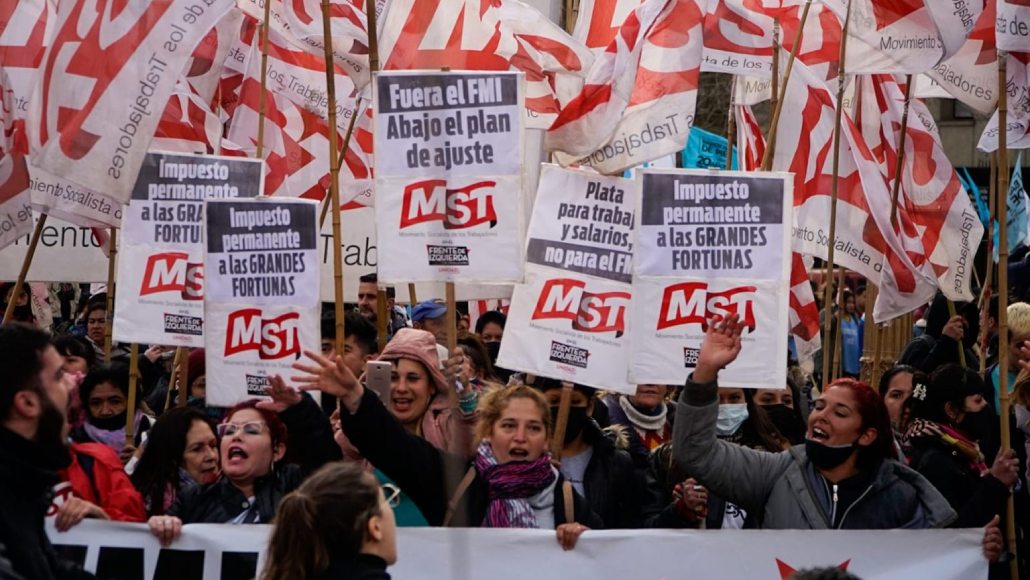Por Nicolás Zuttión
Terminó el miércoles y el corazón político del país presenció dos acciones. Como se había anunciado hace tiempo, la CGT, la CTA y organizaciones sociales afines al gobierno movilizaron después de mucho tiempo al Congreso. Así como lo reflejó el documento de la central que conducen Daer, Acuña y Moyano, la movilización no indicó en ningún momento la responsabilidad del gobierno sobre la crisis económica y social presente; todo lo contrario, fue una marcha en apoyo. En la vereda política de enfrente, la izquierda, el Plenario del Sindicalismo Combativo y las organizaciones sociales combativas colmaron la Plaza 1° de Mayo exigiendo un paro nacional y un plan de lucha para derrotar el ajuste del Frente de Todos y el FMI.
Contra los formadores de precios, pero a favor de quienes los dejar remarcar
La convocatoria de la CGT, que luego sumó la adhesión de la CTA también terminó contando con la presencia de las organizaciones sociales afines al gobierno. Así, con la presencia del Movimiento Evita y La Cámpora, la acción de la burocracia sindical se terminó convirtiendo, como era de esperar, en un acto oficialista. Algo que, en la antesala, había sido aclarado por Yasky al declarar que “todos los partidos que integran el FdT han decidido también convocar a la marcha”.
Como era sabido, la marcha que partió de la 9 de julio al Congreso no contó con oradores ni tampoco con la lectura de ningún documento. Una muestra de la descoordinación y choque de intereses de los propios burócratas, como así también temor por experiencias pasadas. Ya que, desde la CGT, el recuerdo de aquel atril que volaba reflejando la bronca de las bases para con los dirigentes sigue vigente.
El eje rector de la convocatoria terminó siendo el escrito que hicieron público. Se denunciaba a los formadores de precios, a los especuladores y a quienes desean una inflación, pero sin crítica alguna hacia el gobierno del Frente de Todos.
Te puede interesar: Documento de la CGT. Contra la inflación, pero a favor del gobierno que la deja correr
Una vez terminada la jornada, en la sede central, la cúpula de la CGT brindó una conferencia de prensa. Allí calificaron de positiva una acción que ni siquiera mencionó la posibilidad de un paro cuando la inflación anual sea del 90%. Los popes de la burocracia sindical sólo lanzaron frases vacías. Héctor Daer arrojó: “Es necesario encontrar una salida a favor y no llevar una salida como pretenden los sectores de concentración económica que presionan en favor de un proceso devaluatorio que empobrecería al pueblo y aumentaría la masa de pobreza estructural”. En su turno, Pablo Moyano, también dijo: “Decirle al presidente que tome las medidas que tiene que tomar, que lo vamos a acompañar, que los siente en la mesa a los que remarcan los precios”.
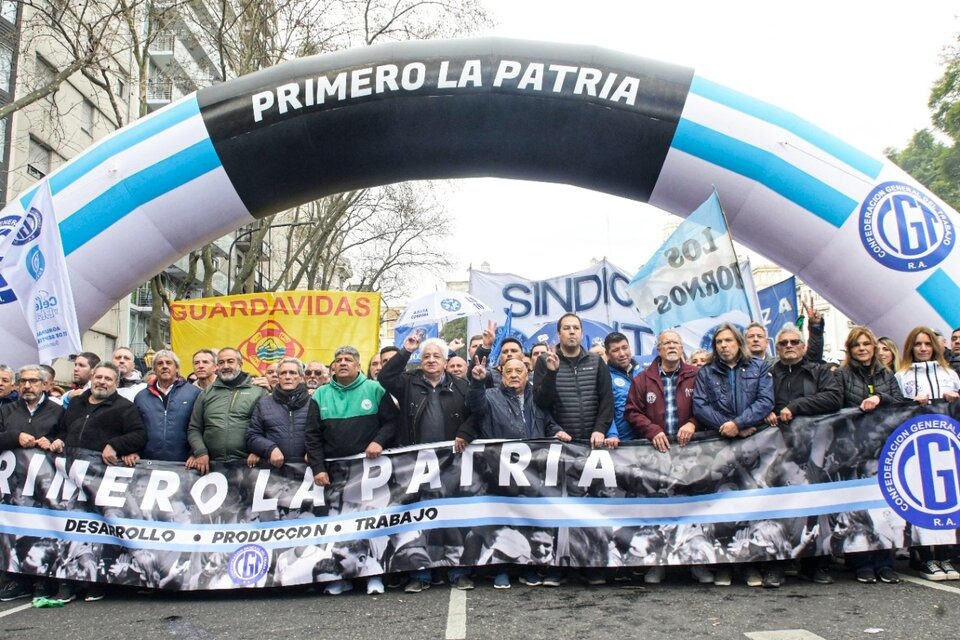
Pareciera que los burócratas son comentaristas de la realidad y no han registrado que el Frente de Todos, el cual integran, no ha tomado una sola medida en favor de la clase trabajadora en los casi tres años de gobierno que lleva. Estas timoratas declaraciones que exigen las “medidas necesarias” no son otra cosa que palabras para aflojar la bronca que existe en las bases, y más aún como medidas mencionadas como las de ayer, un tarifazo sin igual en los servicios de luz, gas y agua. Mientras que, lejos de afectar a los sectores concentrados, el gobierno se sienta con los mismos para otorgar más beneficios, como ayer lo reflejó la reunión de Bahillo con las patronales agrarias.
También, pervirtiendo una real confrontación con las maniobras de la derecha, el aparato burocrático en su conjunto se escondió bajo el argumento de un supuesto “golpe” en marcha. Allí residió otro de los motivos fundantes de la “unidad” en defensa del actual gobierno. Lo cierto es que sin independencia del propio FdT, que trabaja para allanarle el terreno a estos sectores como demostramos en los argumentos anteriores, es imposible ir contra esos sectores. Más bien, sostener el gobierno de Alberto Fernández y el acuerdo con el FMI es la puerta de entrada para que modelos como los de Juntos por el Cambio retornen al poder con una ofensiva más brusca hacia los trabajadores.
En resumen, podríamos afirmar que la acción de la CGT y la CTA tuvo la intención de mostrar poder de fuego en la calle, pero sin una estrategia en favor de los intereses de los trabajadores. La capacidad de movilización sólo la ponen en juego para demostrar las acciones que tienen dentro de la coalición gobernante, en medio de un ajuste feroz comandado por Massa. A la misma vez y como elemento más contundente, la convocatoria tuvo un carácter bifronte: funcionar como chaleco contenedor de la protesta que emerge de abajo y calmar el malestar social, algo que se evidenció con la participación de cientos de trabajadores hartos de la situación actual que, como declararon en muchas entrevistas que se transmitieron en vivo, están decididos a pelear para que los salarios dejen de perder. Pero lejos de ser el primer puntapié contra el ajuste, el gobierno y el FMI, esta fue una acción que asegura la continuidad de estos tres elementos.
La izquierda llenó una plaza que planteó una salida alternativa
De forma antagónica, del otro lado, en la Plaza 1° de Mayo como en diferentes lugares del país, la izquierda, el Plenario del Sindicalismo Combativo y organizaciones piqueteras lograron una convocatoria importante.
En favor de las luchas en curso, contra el plan de ajuste del gobierno y el FMI y con la exigencia de un paro nacional y un plan de lucha, los sectores combativos mostraron una alternativa a fortalecer. Contrario a lo planteado por parte de la burocracia sindical se mostró otra opción sindical y política que muestra que el ajuste no es algo que sí o sí tenga que soportar los trabajadores.
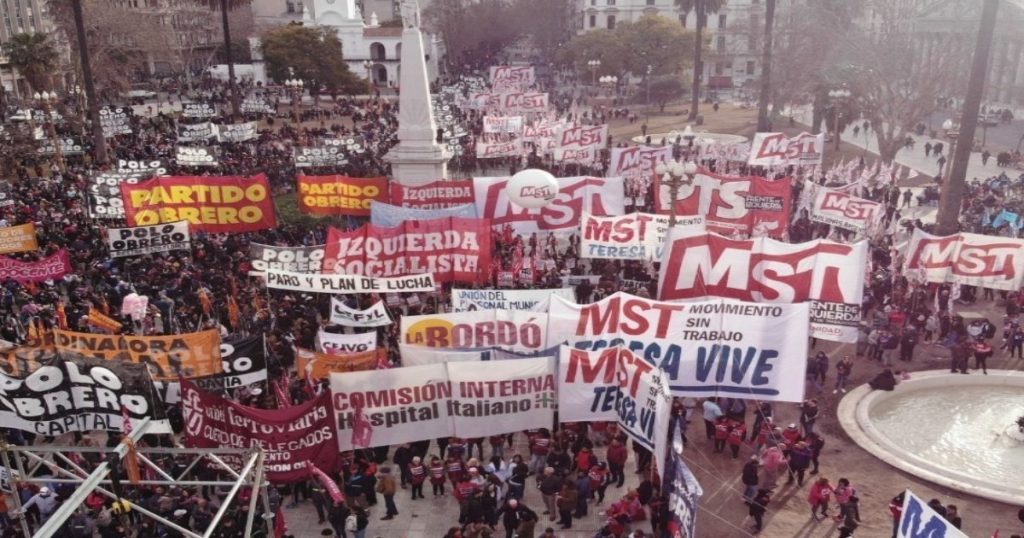
Durante el acto en el que estuvo presente Cele Fierro del MST y otros dirigentes del FIT-U, tomaron la palabra varios dirigentes de la izquierda sindical clasista como Alejandro Crespo del SUTNA, y referentes de las organizaciones sociales combativas. Allí, Guillermo Pacagnini, referente del PSC y de ANCLA-MST, en su momento de hablar dejó en claro que “dijeron que la izquierda no mueve la aguja. Pero esta plaza demostró que sí la mueve y mucho cuando hay un polo que convoca. (…) Hay otra salida, un plan obrero y popular, ajustando a los ricos, dejando de pagar la deuda, cobrándole impuestos a los que más tienen, recuperando las privatizadas, nacionalizando la banca, en definitiva, que la crisis no la paguemos más los trabajadores, sino las corporaciones y el fondo monetario”.
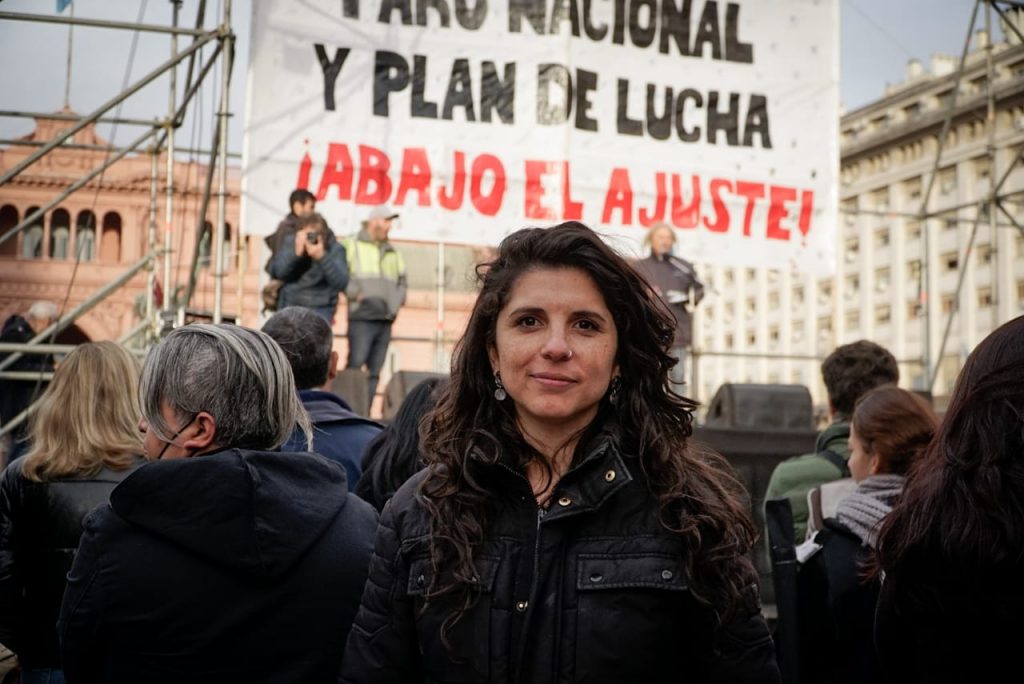
Una alternativa opuesta por el vértice a la política desarrollada en la otra marcha. La materia prima para poner en pie una fuerza de la clase trabajadora existe, ante esto el FIT-U tiene la responsabilidad de transformarse en una herramienta dinámica que aglutine estas fuerzas. Desde el MST, nuestra corriente sindical ANCLA y en los diferentes espacios donde actuamos como integrantes del frente pondremos todas nuestras energías para seguir convocando a todos los decepcionados de este gobierno a luchar en las calles por salario y trabajo genuino, por mayor asistencia social, anular los tarifazos, dejar de pagar la estafa de la deuda externa y terminar relaciones con el FMI. Pondremos todas nuestras energías para hacer crecer esta alternativa de izquierda, anticapitalista y socialista con ansias de poder, porque este rumbo capitalista no va más y es hora de un gobierno de las y los trabajadores.
